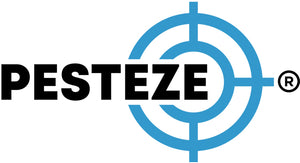HOW TO SEAL ENTRY POINTS TO PREVENT RODENTS

HOW TO SEAL ENTRY POINTS TO PREVENT RODENTS
SUMMARY
Rodents can squeeze through surprisingly small gaps to invade your home. Sealing entry points is one of the most effective ways to prevent infestations. This guide explains how to find, block, and secure potential openings.
FEATURES
-
Inspect thoroughly: Check foundations, walls, doors, and windows for gaps.
-
Focus on utility openings: Seal around pipes, vents, and wires.
-
Use strong materials: Steel wool, caulk, and hardware cloth work best.
-
Reinforce doors and windows: Install weather stripping and door sweeps.
-
Check the roof and attic: Rodents often enter through higher points.
-
Maintain regularly: Inspect and repair seals as part of home upkeep.
GUIDE DESCRIPTION
Rodents are skilled at finding ways into homes, often squeezing through holes as small as a dime. Once inside, they can damage property, contaminate food, and spread disease. Learning how to seal entry points to prevent rodents is essential for long-term protection.
Start with a thorough inspection of your home’s exterior and interior. Look for cracks in foundations, gaps in walls, and spaces around doors or windows. Pay close attention to basements, crawl spaces, and attics, where rodents often enter unnoticed.
Next, focus on utility openings. Rodents frequently enter through gaps around pipes, vents, and electrical wiring. Use steel wool packed tightly into holes, then seal over it with caulk or expanding foam to create a durable barrier. Hardware cloth or metal flashing can cover larger gaps or vents.
Using strong materials is key. Ordinary foam or plastic won’t hold up against rodent teeth, but steel, metal mesh, or cement-based fillers are effective. For small holes, steel wool combined with caulk works best. For larger areas, hardware cloth secured with screws creates a long-lasting solution.
Don’t overlook doors and windows. Install weather stripping and door sweeps to eliminate gaps at the bottom of doors. Ensure window screens are intact and replace any torn mesh. Garage doors are another common entry point, so check their seals regularly.
The roof and attic should also be inspected. Rats and squirrels often climb trees or utility lines to access higher entry points. Seal openings around roof vents, chimneys, and soffits with metal mesh to keep them out while maintaining ventilation.
Finally, regular maintenance is essential. Even after sealing, materials can degrade over time. Make it part of your seasonal home maintenance to inspect seals, check for new gaps, and reinforce weak points.
By combining careful inspection, durable materials, and consistent upkeep, you can significantly reduce the risk of rodents entering your home. A well-sealed home not only prevents infestations but also improves energy efficiency and overall comfort.
- Saneeth Thota


Comments 0